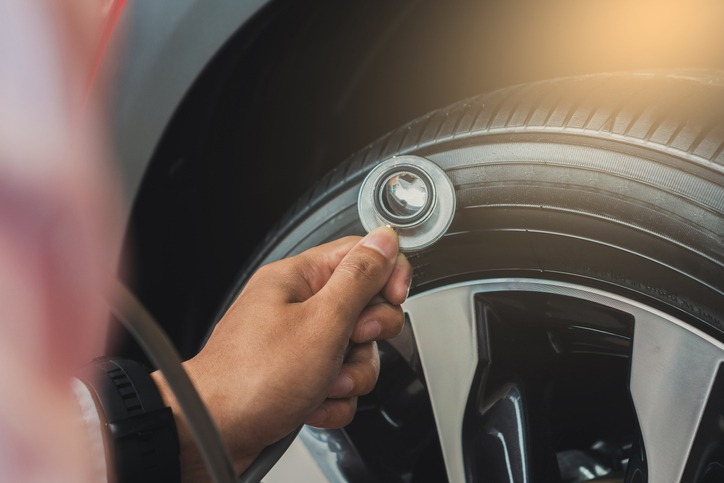There have been comparisons between the thought processes of a mechanic diagnosing a car and a doctor diagnosing a patient in casual conversation. We now recognize that a vehicle is a mechanical system with a finite number of known variables. At the same time, the human body is an intricate chemomechanical system with an infinite number of variables and unknowns.
Both professions are frequently provided with symptoms that they should interpret to determine the root cause. As a result, it must ring true that some tools useful to doctors are also useful to mechanics.
The stethoscope is one such tool that mechanics may find useful in determining the source of different engine noises. The sounds that transmissions and engines make, like symptoms of a disease, can be used to help diagnose problems.
It can be difficult to diagnose what is causing the sound if there is no way to pinpoint its location. You must use the proper tools to be a true car doctor. The most valuable diagnostic tool in your toolbox may be an automotive stethoscope.
Continue reading to find out about this useful tool for car maintenance.
What Is an Automotive Stethoscope?
A mechanic’s or automotive stethoscope is similar to a doctor’s stethoscope. A mechanic’s stethoscope, rather than being used to assess a patient’s breathing or internal noises, is utilized to listen to and track noises found within an engine. It is typically made of chrome-plated steel, hoses, PVC or polyvinyl chloride, and rubber earpieces and can be useful for both professional mechanics and tinkering hobbyists.
Hearing engine parts that need to be replaced or adjusted, such as a knocking lifter or grinding ball bearings, can help a mechanic identify problems and repair a car much more efficiently. The motor’s interior noises can be difficult to detect with the human ear alone. The automotive stethoscope has sensitive earpieces that detect even minor valve vibrations.
Applications of an Automotive Stethoscope
Automotive stethoscopes can help inspect car parts such as the rear axle, transmission, valve train, transfer case, and engine. Using this tool, you can even locate problems within the dashboard. A stethoscope can quickly locate a water pump failure or worn gears that would otherwise be difficult to identify, making troubleshooting a machine an even easier task.
Another function of an automotive stethoscope is to locate difficult-to-find leaks. The tool can assist a mechanic in hearing a leak without seeing it, as seen in the case of a blown head gasket.
Problems can be easily isolated by following the sound of steam, water flow, gas, or oil, allowing the car mechanic to make a timely diagnosis and begin repairs. In this regard, the mechanic’s stethoscope is also useful for checking a vehicle’s pressure flow and vacuum and synchronizing multiple carburetors for optimal function and power.
You can use a variety of special ends for various automotive functions. A needle probe, for example, can be used to isolate difficult-to-find noises and seek out smaller, confined areas, whereas a rubber trumpet can amplify the noise and make it easier to hear. You can use shorter adapters to inspect larger areas of the vehicle.
A mechanic’s stethoscope is a small tool that you can disassemble for ready use and easy storage. Typically, the handle is shock-resistant. Although this is a relatively inexpensive tool, more pricey varieties are usually used for teaching purposes.
How to Use a Mechanical Stethoscope to Diagnose Car Issues
An automotive stethoscope functions similarly to those used by doctors, letting you “hear inside” a machine part.
We chose a stethoscope with two attachments: a sound amplifier and a metal probe. Many car problems are easier to diagnose with an automotive or mechanical stethoscope—a tool that allows you to hear inside the engine. Here’s how to use one to troubleshoot your vehicle:
- Utilize the amplifier to zero in on the source of the noise.
- Then, use the metal probe to pinpoint the exact root of the problem.
- Connect the hose to the amplifier attachment and move it around the engine compartment. This will limit your search to a smaller geographical area.
- Finally, place the metal probe of the scope on the non-rotating part of the identified component. When it’s worn, you’ll notice a distinct metallic sound.
The Best Automotive Stethoscope
As simple as automotive stethoscopes appear, there is a significant difference between low-cost and high-quality ones. Poor quality units will make phantom noises and send inaccurate noises to your ears. A good stethoscope will discern even the smallest sound and accurately transmit it to your ears.
The tubing is of high quality and appears to be equally at home in an operating room as it is in your garage. Some automotive stethoscopes have cheap, almost plastic-like tubing that cracks and becomes brittle with age.
While one of those products may save you a few dollars, we don’t recommend it because you’ll have to replace it sooner. Quality tubing will last longer and make using the tool easier because it will remain compliant and soft, permitting you to get the contact end where it needs to be.
Lisle Stethoscope
The Lisle stethoscope has a solid metal contact end for identifying mechanical sounds common in transmission and internal engine damage. Lisle also included a funnel amplifier with the kit for air-related sounds. To easily locate the source of wind and air noises, unscrew the contact tip and swap it with the funnel amplifier.
The earpiece on the opposite side of the stethoscope is quite comfortable. Low-quality units almost always lay uncomfortably in the ear, making the tool nearly unbearable. The Lisle stethoscope’s earpieces are soft and comfortable compared to other automotive stethoscopes on the market.
When using the contact tip of this stethoscope, you’ll observe how articulate the sounds were, with almost no background noise. Other products transmitted ambient noises through the earpieces, but the Lisle unit significantly reduced this.
Above all others, we recommend this stethoscope. The price is excellent, the quality is excellent, and we are confident that it will last for many years.



